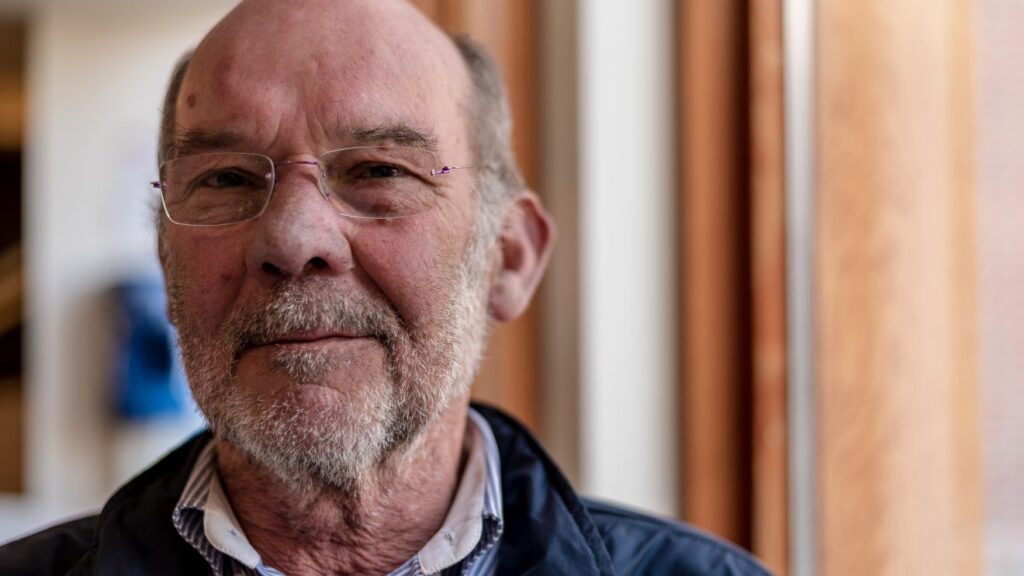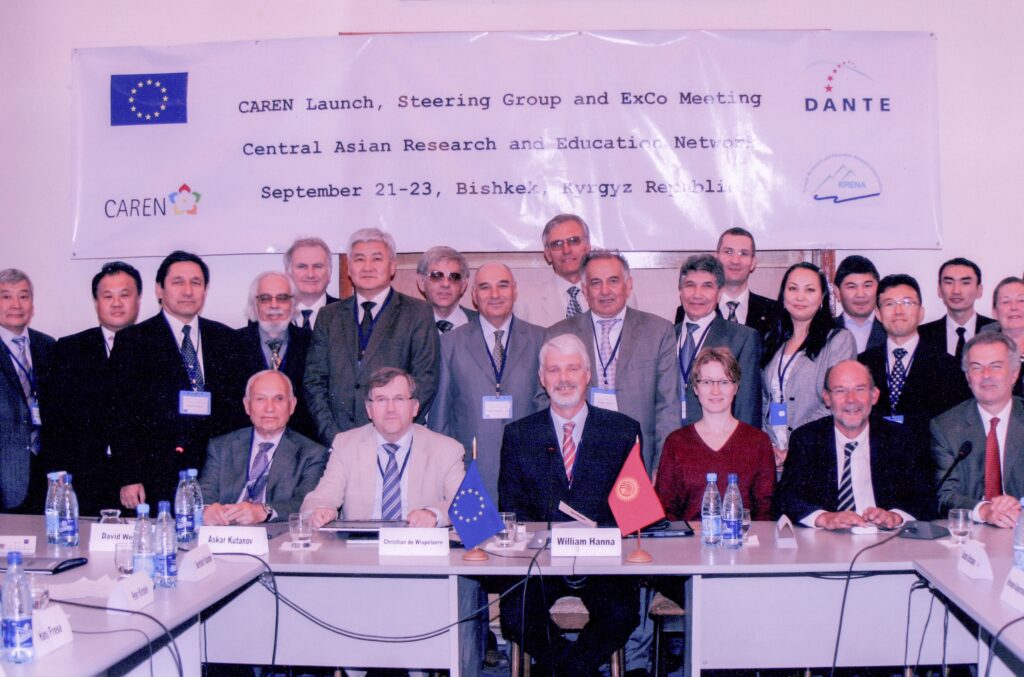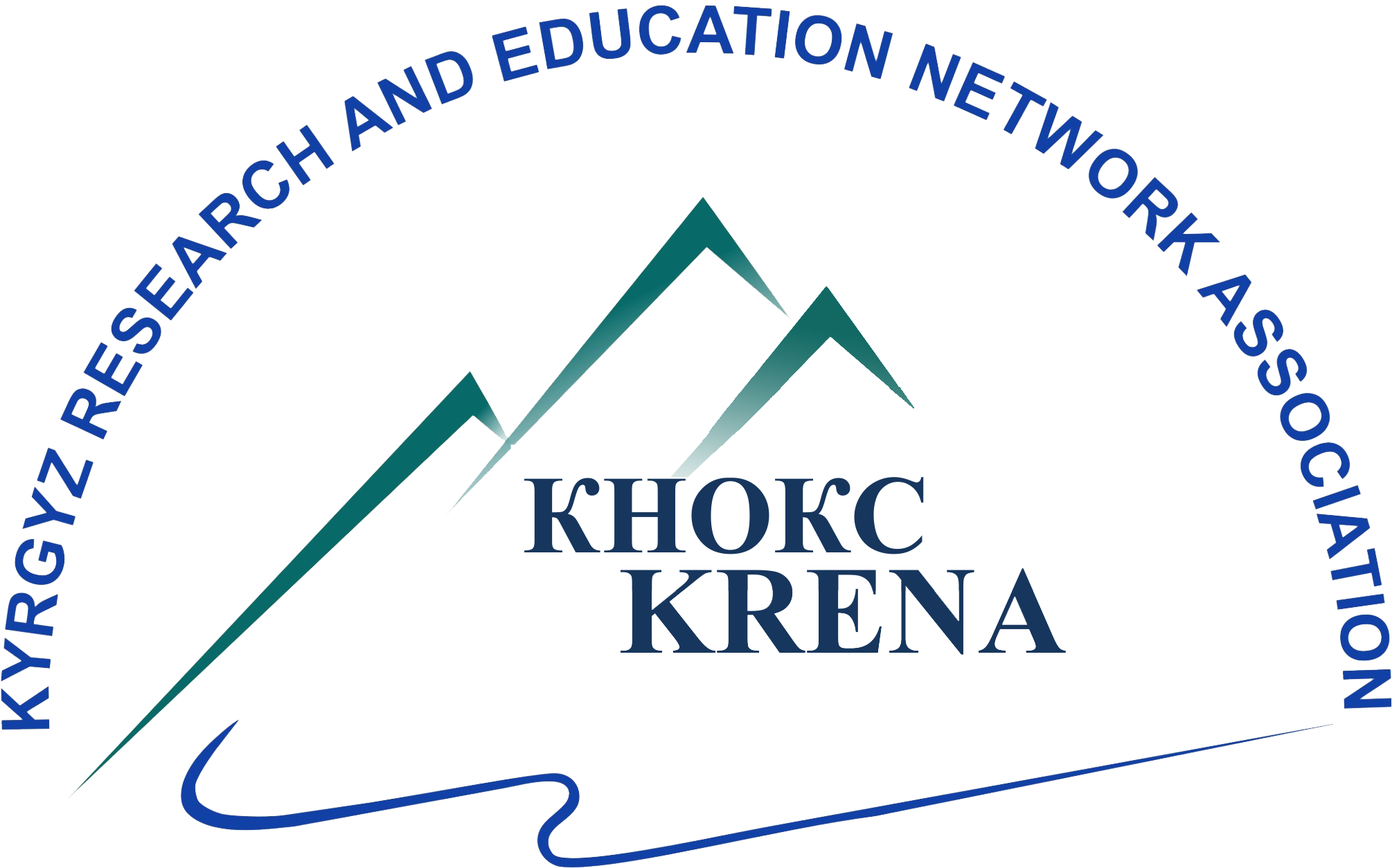"Кыргыз илим жана билим түйүнү" Ассоциация
Ассоциация "Кыргызская научная и образовательная компьютерная сеть"
Our series of interviews on the CAREN3 Project continues with Robert Janz, formerly from the University of Groningen, now freelance ICT consultant. Involved since the early days of the project, he told CONNECT about his past 20 years of experience in bringing connectivity and enhancing collaboration for R&E communities in Central Asia, through CAREN3 and its predecessors.
Interview by Leonardo Marino, GÉANT Robert, when did the project originate and which were the parties involved?
It depends on what you define as THE project. The series of CAREN projects started in 2009, but it was the continuation of another series of initiatives, originating in the SILK project, which dates back to 2001. Funded by NATO and with some additional funding from the EU, the project aimed at creating a “Virtual Silk Highway” by connecting research communities in five Central Asian countries (Kazakhstan, Kyrgyzstan, Tajikistan, Turkmenistan and Uzbekistan), plus Southern Caucasus (Armenia, Azerbaijan, Georgia) and later Afghanistan. Afterwards, CAREN focused solely on Central Asia, while countries in the Southern Caucasus eventually converged into other projects [now EaPConnect].
SILK was managed by the University College of London, with the Leadership of Professor Peter T. Kirstein, often recognised as the father of the European Internet, who recently passed away and who was the driving force of the initiative. At first, my contribution was on a personal basis as a technical advisor for NATO, while the University of Groningen, got involved later on, mainly on training activities and events. When CAREN started, I was seconded to the new coordinator organisations DANTE and then GÉANT, which accepted the many challenges of a project in Central Asia and always provided their very professional expertise in project management and procurement.
What was the status of academic collaboration in Central Asia when you started?

If you ask where we came from, I would say we started from zero.
But to explain better, I will have to go all the way back to the late 90’s, when I first came in contact with the NATO Science Programme. We were just out of the Cold War, and all the former satellite republics of the Soviet Union were left without either a plan or a budget for academia and scientific research. Alongside its political and military programmes, it was a key priority for NATO to maintain and enhance collaboration between scientists from eastern and western blocks. As such they were funding several small scientific projects not only in Central Asia, but also in the Southern Caucasus and in Eastern European countries.
Furthermore, CA countries were paying enormous amounts of money for connectivity. Even in Europe the web was just at its beginnings and costs were higher, but in CA we were talking of 64kbps at tens of thousands of dollars per month! Peter Kirstein, who at the time was also chair of the Networking Panel of the NATO Science Committee, noticed this strong need for connectivity and convinced NATO to redirect funding from the multitude of loose grants into one larger grant that would allow CA to build its own communications network. It was then that the scientific collaboration between CA countries and with Europe really got off.
During this first phase of projects (SILK, SPONGE, OCCASION), lasting up to 2008-2009, we created the network (that still included Southern Caucasus countries) and started setting up NREN organisations, not yet present in CA. Further, with so called NATO Infrastructure Grants, we started building e-infrastructures within the countries to connect academic centres and universities to the Networking Operating Centres of the NRENs.
To summarise, at the beginning of SILK we had zero, after 8 years we had established NRENs in all CA, but it was only through the CAREN project we achieved a proper regional collaboration, which finally resulted in the CAREN Cooperation Center (CAREN CC) in Bishkek.
The series of SILK projects ended in 2009, marking uncertain times for a continuation of similar initiatives in Central Asia. What made CAREN possible and what impact did the project have on the region?
Towards the end of the 2000s, NATO’s focus shifted, as they believed the initiative had gone out of their scope. New opportunities for funding came instead from the EU, now willing to support CA countries on the condition that there was also formal and economical support from the local governments.
Coordinated by DANTE – later to become GÉANT –, the first in the series of CAREN projects started with a massive technological migration: from a distributed satellite network, with its hub in Hamburg, to a fibre optic network. Our initial aim was to set up a proper regional network, interconnecting CA countries among each other and with redundant links going out to Europe. However, we found out that this was not actually possible, mainly due to the monopolistic attitude of local telecom companies demanding huge prices. The absurdity was that connecting the 80km from Almaty (Kazakhstan) to Bishkek (Kyrgyzstan) was more expensive than linking a single CA country all the way back to Europe!
As a consequence, we ended up connecting the Central Asian countries singly, either to Frankfurt – as the nearest point of presence in the GÉANT pan-European network – or to Hong Kong, linking to the TEIN Asian network. On top of that we built a virtual Central Asian network, even if there wasn’t a direct connection between the countries. Clearly that resulted in latency problems, because the signal had to travel 5.000km and then come back, but we managed nonetheless to provide access to fundamental information, to enable key regional collaborations, introduce virtual environments, video conferencing and distance education to universities and academia in CA.
Tajik and Kyrgyz Academies of Sciences even established joint doctorate degree programmes, with joint dissertations and defences via video conference. That, in my opinion, is a very nice and significant example of CAREN’s impact on the region.

